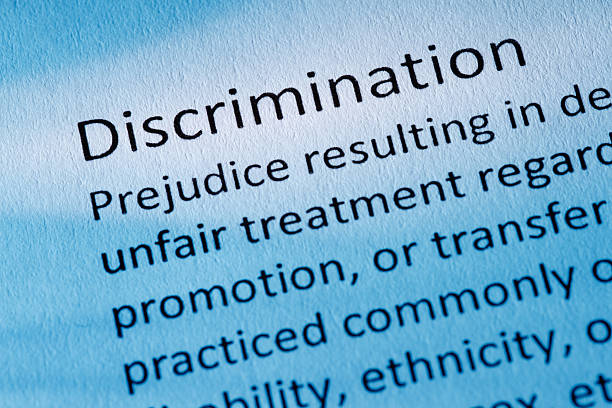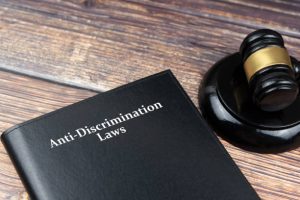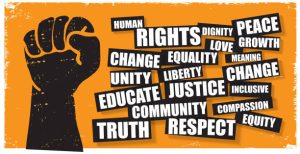
What is victimisation?
The legal definition of victimisation is when an employee complains about how they are treated or what their experiencing in the workplace. As a result of the complaint the employee is treated worse or facing adverse action or dismissal from the employer. Complaints can be in regards to discrimination, sexual harassment, bullying, or vilifying comments. Victimisation is protected against by section 104 of the Equal Opportunities Act 2010 (Vic).
There is no measure of ‘how bad is bad enough’ to be considered victimized. However, section 342 of the Fair Work Act 2009 (Cth) does list actions taken by the employer that is considered adverse action. Including dismissing (terminating) the employee. Injuring the employee in their employment. Altering the employee’s position to their detriment, and discriminating against the employee. To provide examples of possible ways an employee can be treated even worse.
Where is my protection
Victimisation is not only protected in Victoria, as the legislation would suggest. There are Commonwealth anti-discrimination laws that protect all states and territories against being treated less favorably due to certain characteristics. For example racism is protected against under the Racial Discrimination Act 1975. Ageism under the Age Discrimination Act 2004. Sex, pregnancy, marital status, sexual orientation (and similar characteristics) under the Sex Discrimination Act 1984. Disability under the Disability Discrimination Act 1992. Furthermore, the Fair Work Act 2009 protects against adverse action from complaining about the aforementioned discrimination. Therefore, even if not explicitly stated there is legislation to protect against victimisation nationwide.
The protection against victimisation is also very similar to the whistleblower policy. Where it is illegal to treat an employee negatively because they have vocalized illegal behaviour. Employers have tried to create loopholes in the whistleblower legislation in order to silence employees and continue their illegal or unethical behaviour. An example includes private businesses creating hotlines for employees to whistleblower into rather than official avenues (Australian Securities and Investments Commission, Worksafe). Therefore, the whistleblower legislation would not be ‘technically’ relevant.

Pregnancy discrimination
A woman told her supervisor that she was pregnant. Immediately afterwards the supervisor started to make continuous comments that she should finish her work and insinuating that her role would not be available after the baby was born due to a company restructure. Afterwards the supervisor had placed papers, amongst other work, in the woman’s work tray containing information regarding maternity leave and how to dismiss an employee. The woman took the papers to a solicitor who lodged a claim to the Queensland Human Rights Commission (QHRC).
Upon receiving the notice stating a claim has been lodged the woman was stood down pending a workplace investigation. On the basis that the woman had removed confidential information from the supervisor’s office. The solicitor lodged another claim on the grounds of victimisation and discrimination regarding pregnancy with the Commission.
All parties agreed to negotiate at a conciliation meeting. The woman was offered her previous role but declined after feeling the work relationship had disintegrated. The parties agreed to accept the woman’s resignation, pay for her legal fees, and pay $3,500 for the pain and suffering she experienced.

Reasonable adjustments
In general protections claim Tropoulos v Journey Lawyers Pty Ltd [2019] FCA 436, Mr Steven Tropoulos, the employee, was employed as a Senior lawyer and diagnosed with depressive disorder. He argued that his employer did not make reasonable adjustments to his employment to accommodate for his disability. Thus breaching the Disability Discrimination Act (1992) (Cth). Twice Mr Tropoulos had tried to return to work with reduced working hours and less responsibility and was still not able to complete his designated tasks. In the third attempt, the employer sought to reduce Mr Tropouls’s salary. And expected responsibilities with the return to work plan including gradual additional hours where appropriate.
Therefore, arguing victimisation as Mr Tropoulos’s salary would not have been reduced if he did not complain that his employer was not accommodating for his disabilities. The issue is that Mr Tropoulos argued that his employer should have provided greater support and amendments. Including working half days, return to his previous position and salary as a Senior associate at a law firm, allow to work on former client files, and briefings on how he would be returning to work.
Furthermore, Mr Tropuolos’s return to work plan was not a formally written plan from his psychiatrist. The psychiatrist was aware of the plan but was mostly directed by Mr Tropoulos. It was also found that the psychiatrist was over optimistic on Mr Tropoulos’s ability to work. Therefore, the return to work plan was not reliable.

Workplace adjustments
It was decided that the employer has actually made appropriate adjustments to comply with the informal return to work plan and did not breach the Disability Discrimination Act. The employer provided alternative working hours, time to recover, additional leave, and gradual steps to improve work performance. The employer had taken reasonable steps to accommodate. Furthermore, Mr Tropoulos was not treated less favorably than an employee without a depressive disorder.
Additionally, victimisation was disproved as Mr Tropoulos would not have been able to carry out the inherent requirements of a senior lawyer even if his requests for amendments were implemented. Therefore, the reduction to salary and reduced responsibilities was not in retaliation to Mr Tropoulos complaining about discriminatory actions, but that with Mr Tropoulos’s condition he would not be able to perform the minimum requirements of his role.

Misconceptions of victimisation
There may be misconceptions on what constitutes victimisation and who or what type of employee can be affected by victimisation. Firstly, victimisation is not the act of being discriminated against, bullied, made fun of, or harassed. Often people will believe it is the process of being a victim from acts such as discrimination or harassment. It is actually the effect of complaining about the discrimination (and so forth) that results in an employee’s detriment. There cannot be victimisation without the complaint component.
Furthermore, victimisation can occur in any type of workplace. Not just the ‘bad workplaces’(toxic workplaces). Employees will often trust their employer and the business and forget that their relationship is a professional and often a contracted agreement. Because a employer is known for following the correct procedures and obligations does not mean that they are not capable of victimisation. A employer may simply be well versed in covering up their conflicts. Therefore, it is imperative to always remain vigilant when it comes to changes to your employment or role. Get these changes in writing.

Claim to be victimized
The next misconception is that victimisation can only occur to the person making the original compliant. This is not true as it can affect anyone who has committed a ‘protected act’. Apart from making a complaint, this can include helping someone make a complaint by acting as a witness or providing evidence. Even though an employee is not complaining about being discriminated against, if they help someone to prove the complaint and as a result have faced repercussions or treated less favorably than they can still claim to be victimized. Other protected acts include alleging that someone has breached the Equality Act 2010.
What can I do if I have been victimized?
Adverse action without dismissal
If you have been victimized and facing adverse action and have not been dismissed and are still employed then you may consider a General Protections claim (not involving dismissal), or also known as an F8C Form to the Fair Work Commission. This claim can be lodged on the basis that you have exercised a workplace right and then adverse action was taken against you. Victimisation will be an additional component to the claim and will also contribute to experiencing pain and suffering.
By lodging an F8C Form you will be asking your employer to enter into a negotiation process with a Fair Work member (the equivalent of a judge) to negotiate and hopefully agree upon a settlement. This process is also referred to as a conciliation meeting. To remedy the action taken against you, you can ask for financial compensation in the form of a number of weeks wages, as well as general damages for pain and suffering. You can raise other unresolved issues within reason. (unpaid superannuation, holiday pay, etc)
There is no strict list of what can be asked for as a remedy, however there does have to be a level of appropriateness. Note, that you may take this opportunity to choose to resign from the employer as lodging a claim against them does have the opportunity to ruin the employer-employee relationship, in addition to already being adversely affected.

Adverse action with dismissal
If the adverse action and victimisation does result in the termination of your employment then there are two potential claims that can be lodged to the Fair Work Commission. First, you may consider a General Protections Form (involving dismissal), or also known as an F8 Form. it is the same basis as the F8C Form, however, the adverse action must include a dismissal. Furthermore, it may be easier to negotiate general damages for pain and suffering as you are more likely to face financial detriment from losing an income source, and thus greater emotional detriment. Furthermore, you may ask that the company accept your resignation, rather than a dismissal. Typically making it easier to find future employment.
Unfair dismissal claim
The second option is to lodge an Unfair Dismissal claim, also known as an F2 Form. There are greater restrictions when lodging an F2 form, however the basis is that the employer did not adhere to their legal obligation to follow the correct procedure when dismissing an employee. Section 387 of the Fair Work Act 2009 (Cth) provides a list of obligations. Depending on the facts of the dismissal itself will depend on if the F2 form is relevant.
However, if an employer is terminating an employee on the pretense that they exercised their workplace right to complain about being treated poorly, then it is almost guaranteed that they did not follow their dismissal obligations as the reason for the dismissal (often fabricated or irrelevant) has no legal leg to stand on. Other restrictions to an F2 can include length of service and/or the salary exceeding the threshold.
Both the F8 and F2 form have a strict 21 day limit, from when you have been notified of your dismissal, to lodge the claim. This is inclusive of public holidays and weekends. The F8C form has no time limit as you have not been dismissed from your employment.

Tribunals and your employee rights
An employee also has the potential to lodge a claim with the Equal Rights Commission or relevant state Human Right Commission regarding discrimination, sexual harassment, vilification, and subsequent victimisation under the Equal Opportunity Act 2010 or other relevant state based legislation. However, the state Human Right Commissions typically take longer to settle than Fair Work claims, and there are no time restrictions. All state tribunals are working through their extensive backlog of claims after Covid-19 had caused a surge in claims and delay to transition into online hearings.
Therefore, it is recommended to lodge a Fair Work claim within the 21 day restriction and then consider alternative methods if there is no settlement agreed upon. You need to get advice before deciding which path you choose to do down.
Conclusion to: Victimisation what’s it really mean?
I hoped to liked the article on “Victimisation what’s it really mean?” Need any help with workplace issues and disputes. Give us a call at A Whole New Approach. We are not employment lawyers, but leading workplace advisors and commentators. For all Fair work Commission matters including workplace harassment, abandonment of employment, small business dismissals. Being sacked and any related matters, including diversity in the workplace. Termination of employment, employee rights, give us a call.
Free, confidential, prompt advice is here for you 1800 333 666.
Find out “how much is my unfair dismissal worth“. Compare your situation to others, give us a call to discuss potential compensation







